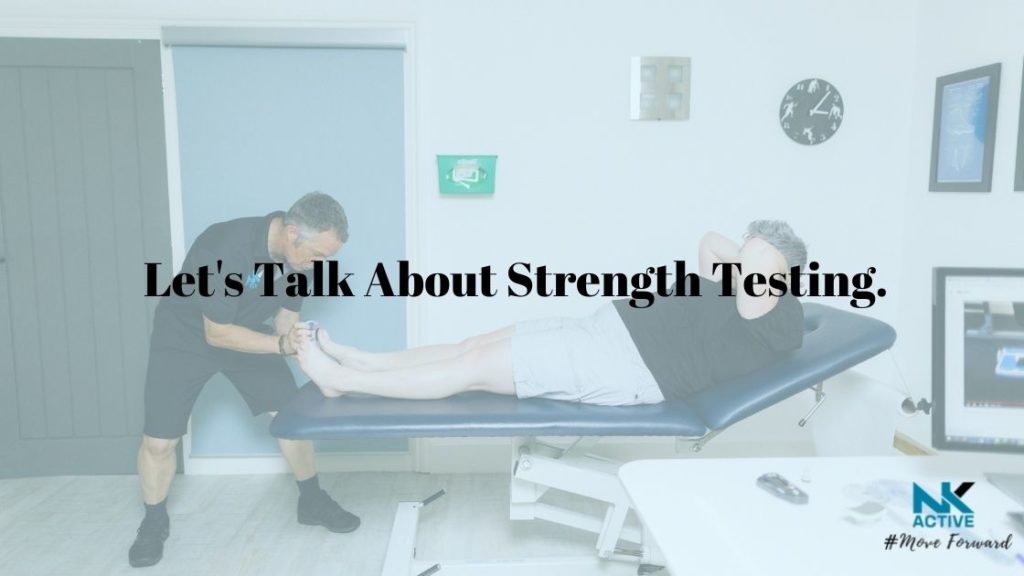
Let’s Talk About Strength Testing.
In nice simple terms, strength testing is exactly what it says on the tin: the ability to test how strong you are through a particular motion or muscle.
There is a known correlation between a reduction in strength and injury. This means that the stronger you are, the less likely you are to pick up an injury! Some studies have reported figures of up to 50% reduction in injury rates by keeping the muscles strong.
At NK Active we can measure your strength, and this helps us fine tune where areas of improvement are required. We use devices such as a handheld dynamometer – a tool that physically measures how strong you are by providing us with a value and this means that we are objectively measuring your strength, rather than giving you an opinion of whether you appear to be weaker in certain movements.
What are the benefits of strength testing?
This can be particularly useful for one or two reasons:
- We can identify potential areas of improvement which could reduce your risk of future injury.
- The values help inform the rehabilitation process. If you are unlucky enough to get an injury then the amount of strength in that area is commonly reduced, so we can test, measure it, provide a treatment and retest to ensure the area is improving.
How do we use strength testing in NK Active?
Typically, when someone starts a rehabilitation programme in NK Active, we will measure their strength at the start of their treatment with us. This enables us to prioritise key exercises needed to support their rehabilitation plan. At the end of their rehabilitation programme, we will repeat the measures. Most of our patients will see an improvement, for some individuals a 300% improve in strength has been recorded.
We have found that this information can be helpful in educating our patients on how to maintain their progress and get back to their daily activities or support training programmes that aim to reduce a person’s chances of reinjury.
Finally, this information helps us to use evidence to support our clinical decisions. This is called evidence informed practice and is used in many healthcare services. For example, there is evidence to suggest that people with osteoarthritis in the mid foot area are likely to have a reduction in strength around the ankles. If we can identify this, then we can guide the patient on how best to manage their condition. In this instance we could strengthen the ankles with specific exercises to work on the muscles in and around the foot. This might be in combination with other therapies such as orthoses or footwear.
If you would like any further information on strength testing, contact us. #moveforward
